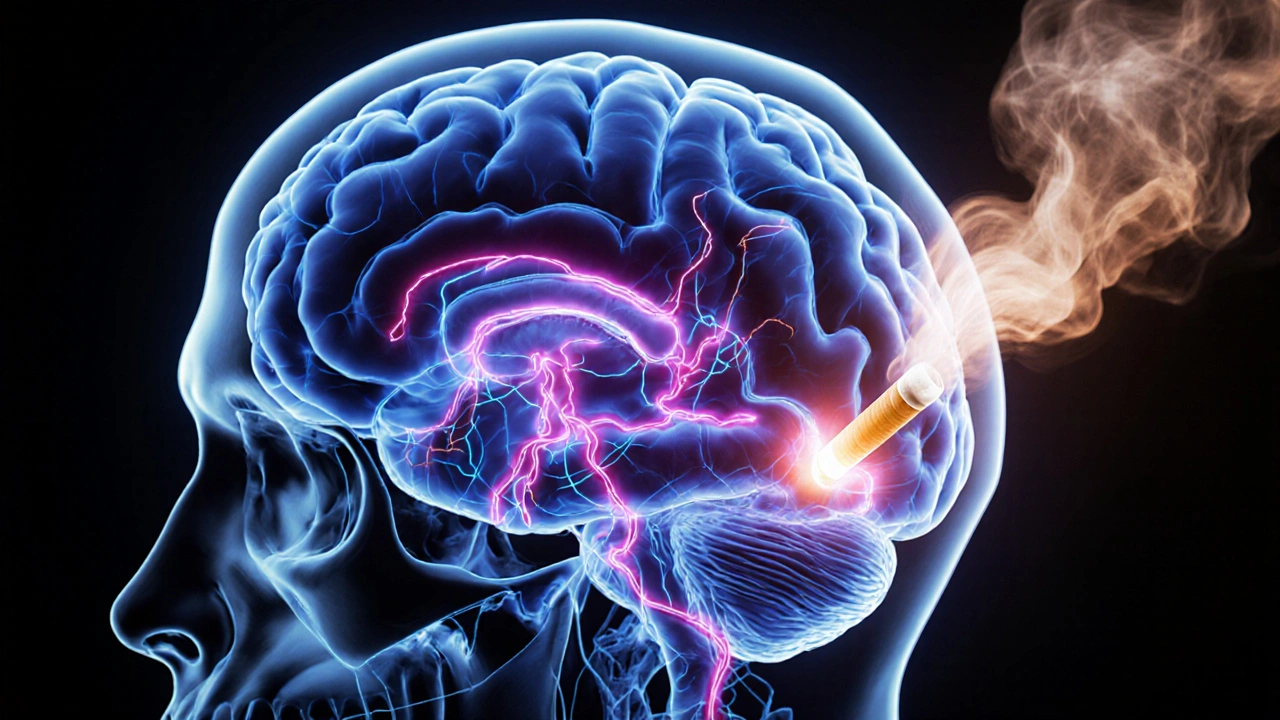When dealing with nicotine dependence, a physiological and psychological reliance on nicotine that develops from regular tobacco use. Also known as tobacco addiction, it often leads to cravings, tolerance, and withdrawal when use stops. It is closely linked to smoking, the act of inhaling tobacco smoke and can be treated with nicotine replacement therapy, products like patches, gum, or lozenges that supply low doses of nicotine. Managing withdrawal symptoms, such as irritability, cravings, and difficulty concentrating, is a key step in quitting.
Understanding nicotine dependence starts with the brain chemistry. Nicotine binds to receptors that release dopamine, giving a quick boost of pleasure. Over time the brain adjusts, needing more nicotine to achieve the same effect—this is tolerance. When the nicotine supply drops, the same receptors trigger discomfort, which we feel as cravings. The cycle keeps many people stuck, especially when daily habits like coffee breaks or social gatherings pair with a cigarette.
Beyond the addiction itself, smoking carries a host of health risks. Chronic exposure to smoke irritates the lungs, damages blood vessels, and fuels inflammation throughout the body. Conditions such as chronic bronchitis, heart disease, and even gut issues like proctitis can flare up because of the toxins in tobacco smoke. Recognizing these links makes the motivation to quit stronger, as you see a direct line from the habit to real‑world health problems.
Breaking the habit doesn’t rely on willpower alone. A solid quit plan usually mixes several strategies. Nicotine replacement therapy (NRT) offers a controlled way to wean off nicotine, reducing the intensity of cravings while you work on behavioral changes. Prescription medicines like varenicline or bupropion can also dampen the brain’s reward response. Counseling, support groups, or digital apps provide accountability and coping tools for stressful moments.
Withdrawal symptoms are toughest in the first few days, but they are temporary. Common signs include irritability, anxiety, trouble sleeping, and increased appetite. Simple tactics—staying hydrated, chewing sugar‑free gum, engaging in light exercise, and using relaxation breathing—can ease the discomfort. Planning ahead for trigger moments, like after meals or during social outings, helps you replace the cigarette with a healthier habit.
Having a clear picture of how nicotine dependence works, what health issues it fuels, and which tools actually help, sets you up for success. Below you’ll find a curated collection of articles that dive deeper into specific aspects—comparisons of cessation aids, tips for managing side effects, and real‑world stories about quitting. Use them as a roadmap to build your own quit strategy and stay on track.

Explore the psychology behind smoking addiction, why quitting feels impossible, and proven strategies to break the habit for good.
Read More© 2025. All rights reserved.